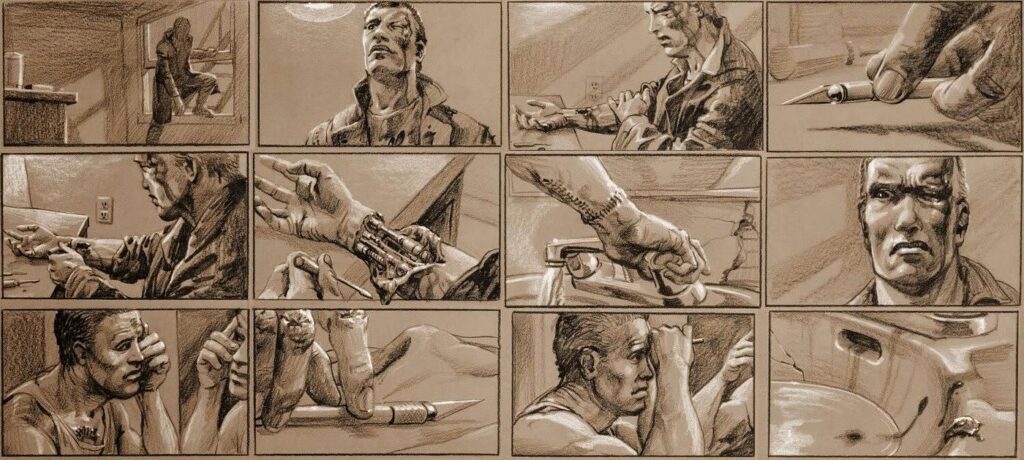To understand the vision of the director for any production, one of the earliest techniques incorporated into the industry was: storyboarding.
History
The very first silent movies were storyboarded as a way of keeping costs down. To know exactly what to shoot, so that the expensive celluloid being used, was not wasted shooting shots that were not part of the plan. Director George Méliès was one of the early filmmakers to rely on storyboards before shooting a single frame. So, it is no surprise that he is seen as one of the first truly visual filmmakers.
The 1933 Walt Disney short film Three Little Pigs was the first film to have a complete set of storyboards before production was signed off. Other films prior to this had used boards to illustrate key scenes or sequences. But the Three Little Pigs was the first production not to be green lit until the storyboards had been approved.

Six years later, Gone with the Wind became the first live action feature film to be completely storyboarded during pre-production. But they were not done by a storyboard artist. Instead, the producers asked the film’s production designer William Cameron Menzies to board every shot of the film (as seen below).

Gone with the Wind is a four-hour movie, so it took their production designer away from his main creative job. This led to Hollywood realising the need for a new kind of artist to focus solely on storyboarding the production.
Techniques
After the emergence of the storyboard artist, it saw them use a variety of techniques, still used to this day.
From hand-drawn boards, animatics, and photomatic (still photos edited together), the storyboard artist can illustrate the director’s vision in full.
Director as Storyboard Artist
There are some directors who storyboard themselves, and never use an additional artist. This approach is due to their own artistry and skill for drawing. James Cameron and Ridley Scott are just two of the well-known directors who board themselves.

Steven Spielberg who storyboarded every shot during the first half of his career, now admits he rarely storyboards in advance. His experience allows him to delve into his creative mind for a reference point of how best to shoot a scene when the time comes.
However, you do not need to be an artist to create your own storyboards. It is about conveying ideas in images. Today, a director can learn how to create storyboards through online tutorials, or even use storyboard software. The tools are out there to help those who can only do stick drawn people.
It is always worth learning this way first, and then go to a storyboard artist to produce more polished boards for the shoot. Then, at the very least, you can use your early storyboards to visually convey to producers why they should join your production to raise the finance to bring on a more polished storyboard artist.
So, in the moments between shoots, a director should take the time to learn the skillset of storyboarding, it will be an invaluable tool throughout their directing career.

